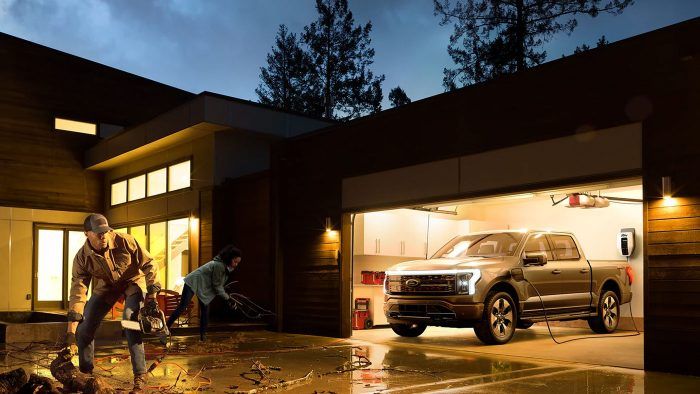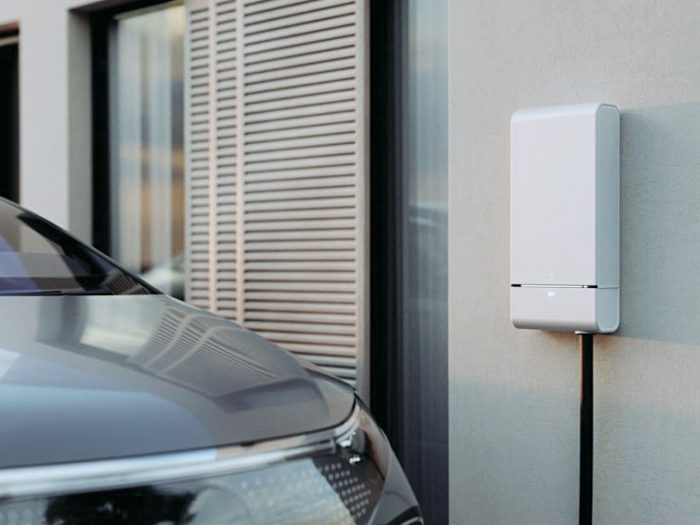Power Your Home with Bidirectional Charging
As electric vehicles become more popular, learn what options you have for using them to charge your home.

Sitting under the hoods of electric vehicles (EVs) and hybrids are a bank of batteries equivalent to a whole row of Tesla Powerwalls. These powerful battery arrays are an untapped resource for home-backup power. Moving electricity in and out of those batteries requires a bidirectional charger, which allows you to both charge your car at home and discharge it to power your home. Already established in Asia, the technology is emerging rapidly in the U.S., promising to usher in a new reality for renewable energy.
In addition to a bidirectional charger, you need a car that is compatible with it. At the time of writing, there were only a few vehicles capable of acting as a storage system for home backup. The latest and greatest is the 2022 Ford F-150 Lightning pickup truck, which packs up to 155 kwh of stored power into its “extended range” batteries, according to most estimates, or 115 kwh in its “standard range” batteries. The truck offers up to 11 AC outlets onboard, including one 240A outlet. Home backup requires Ford’s 80-amp Charge Station Pro bidirectional car charger— which can pump 9.6 kwh at a time back into the home, and works only with this Ford battery.

A couple other electric vehicles and hybrids like the Nissan Leaf are bidirectionally enabled (although they don’t yet have bidirectional car chargers yet), but many others are as little as months away, including vehicles from Audi, Hyundai, Tesla, and Volkswagen. The first residential bidirectional chargers that will work with any enabled EV on the horizon is Wallbox’s Quasar 2, which debuted in the U.K. in 2020 and is expected in North America in late 2022. Others are on the way, promising to usher in the full potential of vehicle-to-grid charging.
Companies like Virginia-based Fermata Energy are already preparing to create cooperative associations of EV owners that will sell their storage capacity to utility companies, who will use it to back up the entire grid during peak periods. Fermata CEO David Slutzky predicts that bidirectional chargers will allow EV and hybrid-vehicle owners to earn thousands of dollars per year from utility companies, ultimately making these vehicles much more affordable and attractive. “At minimum, you’ll get a free car charger and start paying off your car,” he said.
While it may seem counterintuitive, Slutsky suggests that a bidirectional charger will not shorten battery life. “An EV needs to be driven,” he explained. “With a properly managed charger keeping the batteries at a healthy level, you will extend the life of the car, not degrade it.”
Fermata’s bet on vehicle-to-grid charging is backed up by existing programs that pay battery owners for access. For example, Vermont’s Green Mountain Power offers two programs. One is a lease program that makes Powerwall batteries more affordable. The other is a “bring-your-own-device” program that works with any battery system and pays customers cash dividends based on how much power they share with the grid. In exchange for the benefits of these programs, customers give Green Mountain Power access to their batteries during peak-use periods, which lowers costs for all customers.
RELATED STORIES





